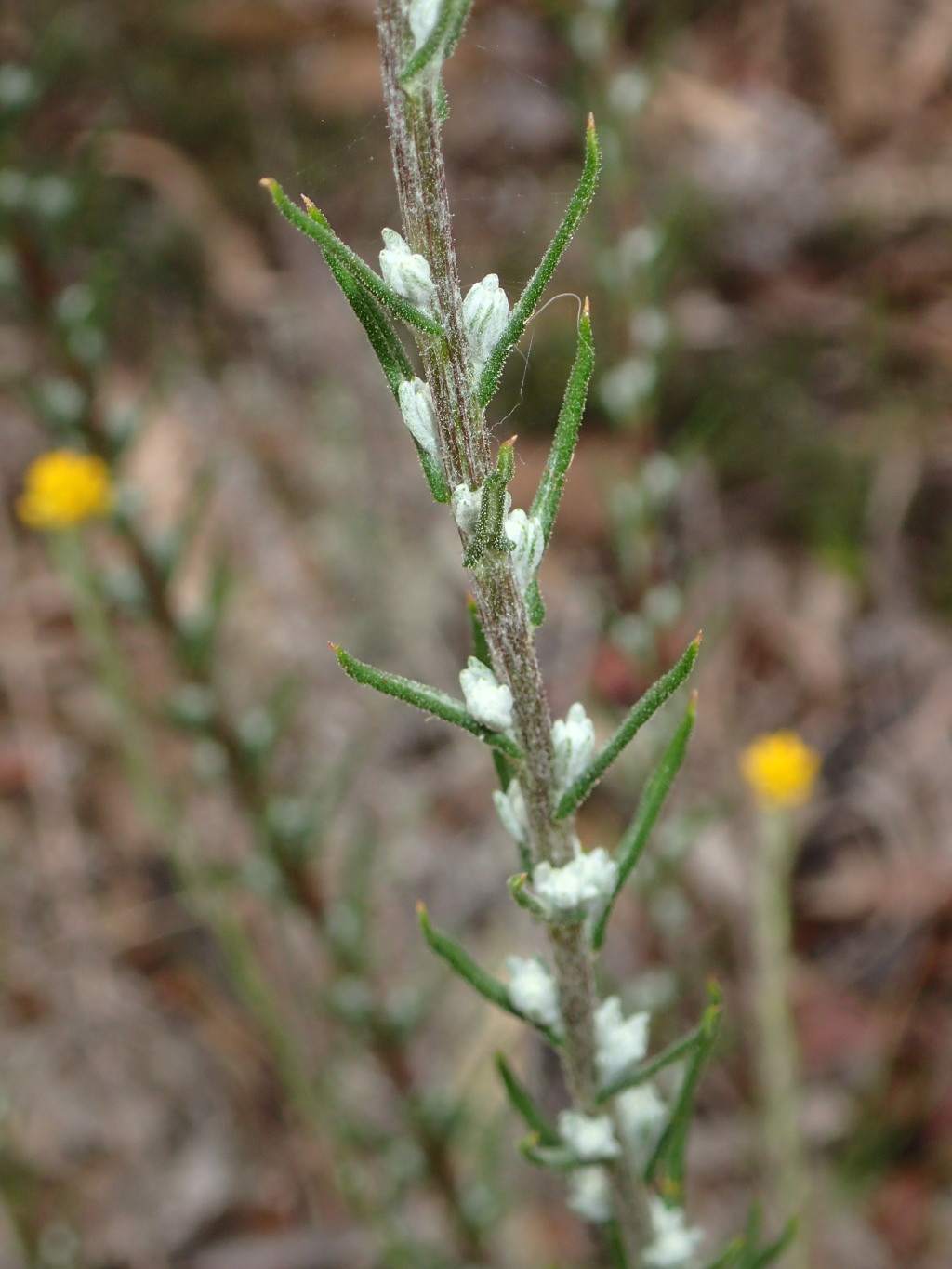Chrysocephalum semipapposum
(Labill.) Steetz Clustered EverlastingErect perennial herb or subshrub, mostly 15–60 cm high, often aromatic, occasionally rhizomatous; stems and branches variably indumented. Leaves very variable, often dimorphic, linear to oblong or narrowly lanceolate, mostly 2–50 mm long, 1–5(–15) mm wide, acute to acuminate, bases often decurrent, margins usually recurved or revolute, silky, cottony, hispid or sometimes glabrescent to glabrous. Capitula usually many, in dense corymbose clusters, occasionally solitary, campanulate to hemispherical, 3–7 mm diam.; involucre 8–10-seriate, 5–8 mm long; involucral bracts stipitate with fringed membranous lamina developed to some extent; outer bracts woolly, golden-yellow or brownish; inner bracts longest, erect, c. equal to florets. Outer florets female, inner florets bisexual. Cypselas 0.5–1.4 mm long; pappus 2–4 mm long, yellow, sometimes lacking in female florets. Flowers mostly spring and summer.
LoM, MuM, Wim, GleP, VVP, VRiv, RobP, MuF, GipP, OtP, WaP, Gold, CVU, GGr, DunT, NIS, EGL, EGU, HSF, HNF, OtR, Strz, MonT, HFE, VAlp. Also WA, NT, SA, Qld, NSW, ACT, Tas. Widespread across much of Victoria in a wide variety of habitats.
Chrysocephalum semipapposum has long been a taxonomically difficult group. A study by Wilson (2016) established 5 subspecies, 4 of which occur in Victoria, however intermediates exist as well as some extreme forms, possibly warranting further recognition. Furthermore, the distinction between C. semipapposum and C. apiculatum is not always clear.
Some, perhaps all, of the subspecies display heteroblasty - that is, leaves of two more-or-less distinct forms may occur on the plant at one time. Usually leaves associated with flowering stems are larger and often less hairy, whereas short-leaved stems are often vegetative only or may produce small, few-headed conflorescences. Flowering is often promoted by fire or other disturbance and successive seasons may produce largely vegetative growth.
The distribution of each of the subspecies in the State is at this stage poorly understood as most Victorian specimens have yet to be returned from a research loan.
Jeanes, J.A. (1999). Asteraceae. In: Walsh, N.G.; Entwisle, T.J., Flora of Victoria Vol. 4, Cornaceae to Asteraceae, pp. 652–666. Inkata Press, Melbourne.
 Spinning
SpinningWilson, P.G. (2016). A taxonomic treatment of Chrysocephalum apiculatum and C. semipapposum (Asteraceae: Gnaphaliae).. Nuytsia 27: 33–73.



